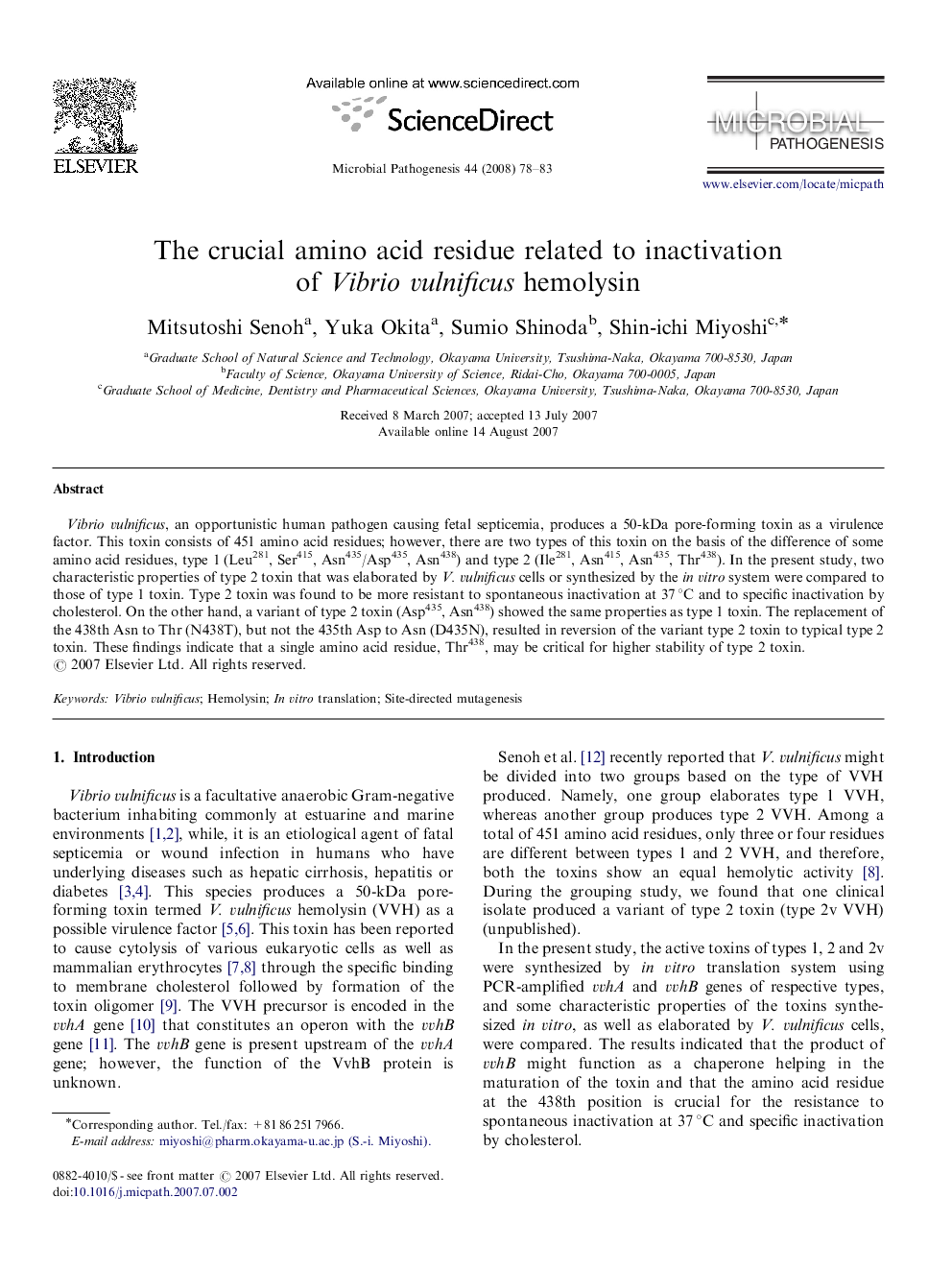| Article ID | Journal | Published Year | Pages | File Type |
|---|---|---|---|---|
| 3417226 | Microbial Pathogenesis | 2008 | 6 Pages |
Vibrio vulnificus, an opportunistic human pathogen causing fetal septicemia, produces a 50-kDa pore-forming toxin as a virulence factor. This toxin consists of 451 amino acid residues; however, there are two types of this toxin on the basis of the difference of some amino acid residues, type 1 (Leu281, Ser415, Asn435/Asp435, Asn438) and type 2 (Ile281, Asn415, Asn435, Thr438). In the present study, two characteristic properties of type 2 toxin that was elaborated by V. vulnificus cells or synthesized by the in vitro system were compared to those of type 1 toxin. Type 2 toxin was found to be more resistant to spontaneous inactivation at 37 °C and to specific inactivation by cholesterol. On the other hand, a variant of type 2 toxin (Asp435, Asn438) showed the same properties as type 1 toxin. The replacement of the 438th Asn to Thr (N438T), but not the 435th Asp to Asn (D435N), resulted in reversion of the variant type 2 toxin to typical type 2 toxin. These findings indicate that a single amino acid residue, Thr438, may be critical for higher stability of type 2 toxin.
